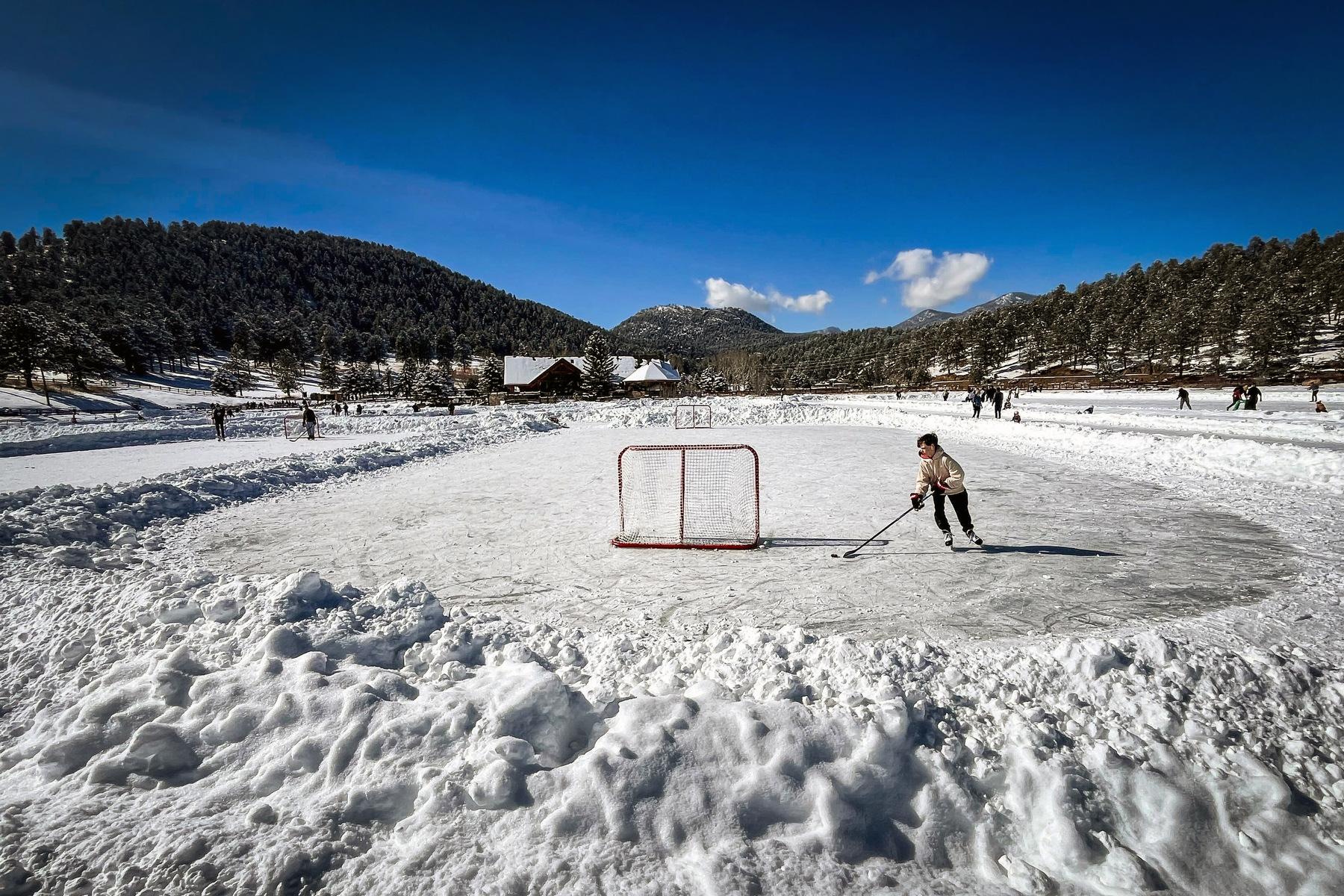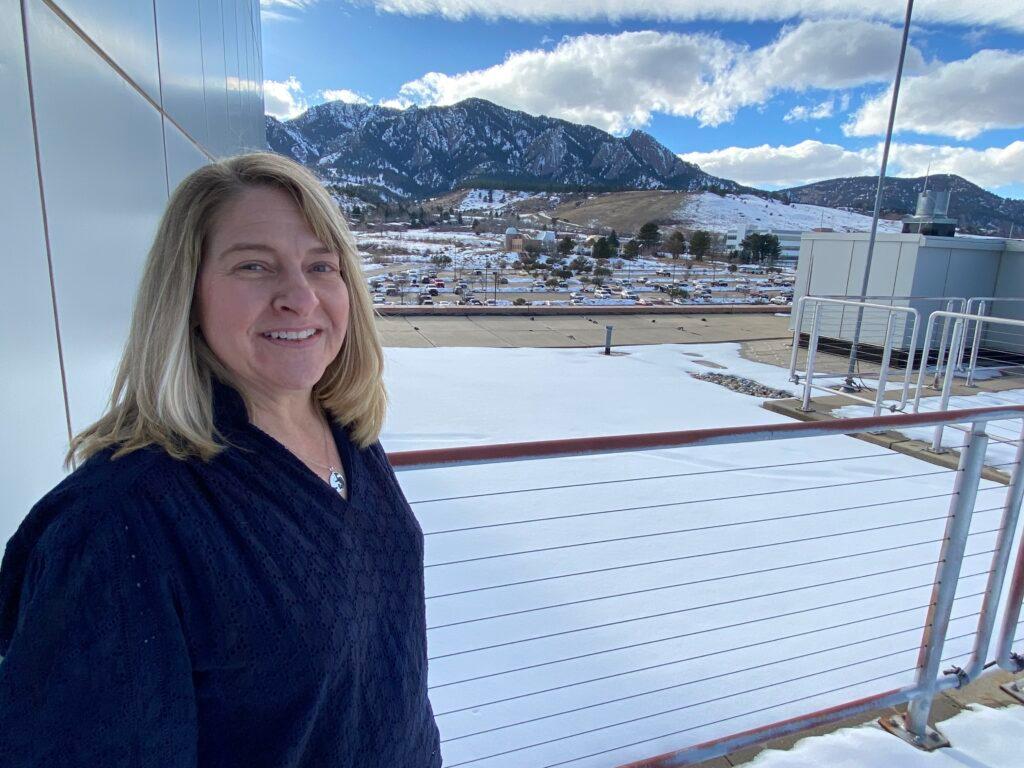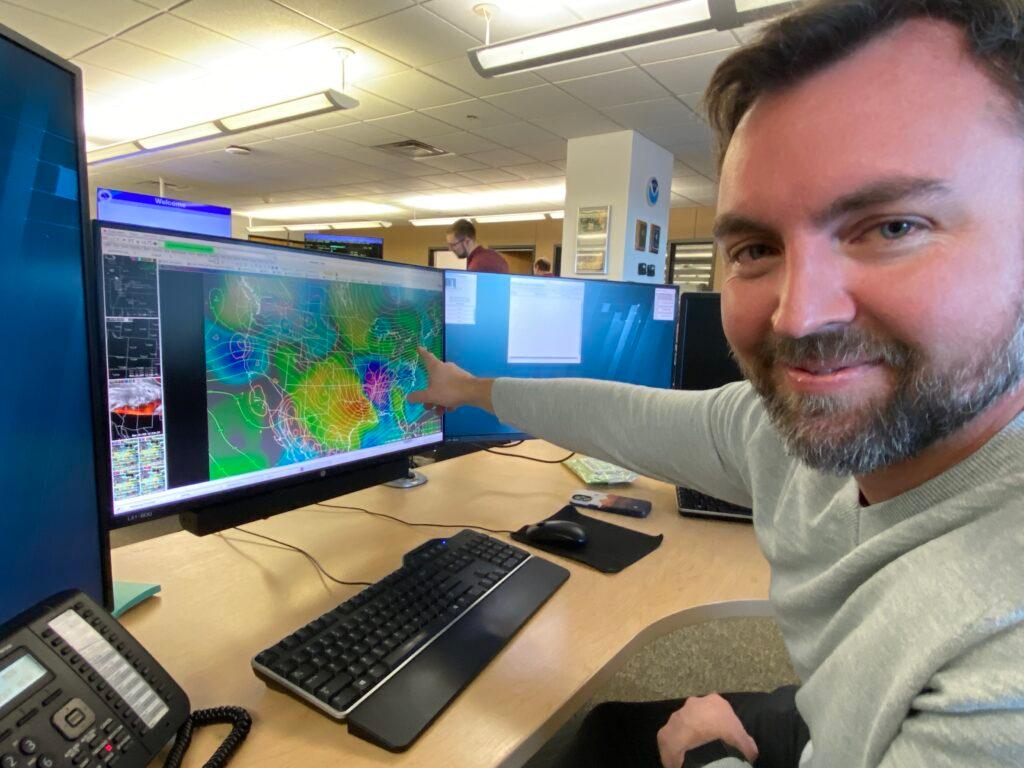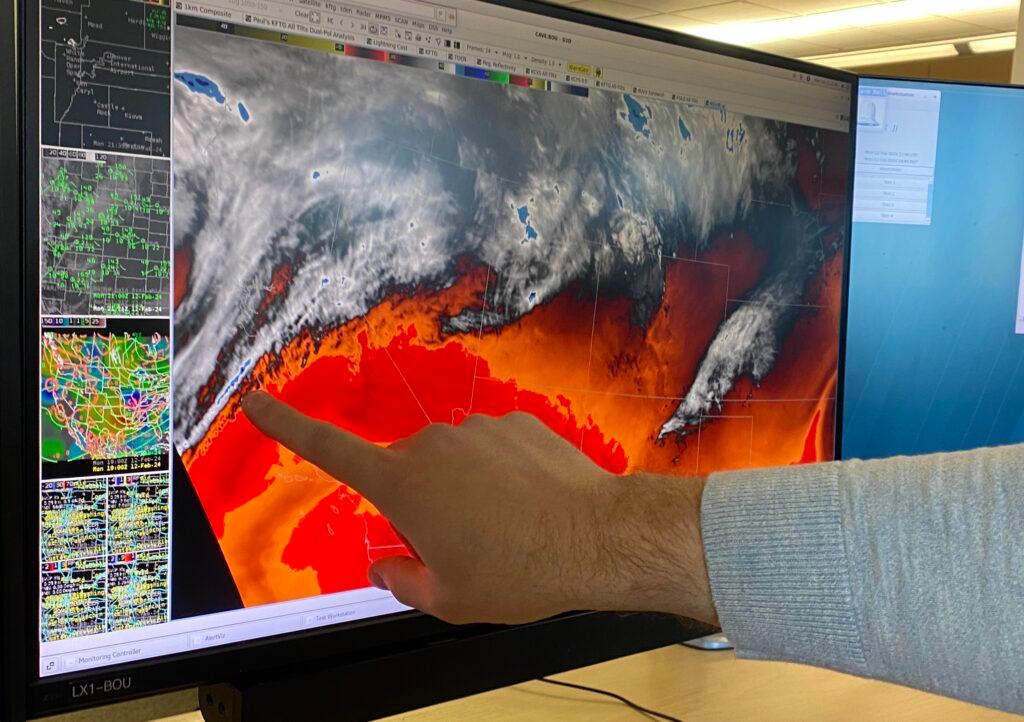
We’ve all been there because we live here.
One day, it’s sunny. It’s warm, like maybe way unseasonably warm. Then comes the cold. Often, in a flash!
What is it with the super-changeable weather in Colorado?
CPR listener Matt Mackenzie reached out to CPR’s Colorado Wonders and asked: Why or what about Colorado weather makes for the wide temperature swings?
In early February he witnessed just such a swing. It was a vintage Colorado bluebird day.
“Must be mid-60s. I’m in a T-shirt,” said Mackenzie, a Denver resident who works in tech, as he hung out outside with co-workers at lunch.
A few hours later, a storm moved in.
“Rain, then freezing rain, and now snow. Lots of it in the high country,” he said in a voicemail message from the slopes of Cooper Mountain.
To figure out why the temps can drop 30 degrees or more in a few hours, I headed to Boulder. Nestled next to the Flatirons is a sandstone facade building housing the National Weather Service Forecast Office.
“This is really our eyes to the west of what's going on on campus,” said Jennifer Stark, meteorologist in charge, from up on the roof. “This is just really where we can go outside and see a bird's-eye view of what's happening around us.
She said Colorado does see some amazing swings in weather, even just for a day.

Weather is a lot like real estate, everything revolves around location, location, location.
The location of Front Range communities right next to the mountains is key, and so is Colorado's semi-arid climate.
“That dry air mass tends to lend itself to quite rapid heating and rapid cooling,” said Stark. “Basically dry air heats up quicker and cools off quicker.”
Downstairs in the Weather Service office, huddled around a computer monitor, a team prepares the forecast you get on your phone or local broadcast.
On the wall are newspaper clippings from June 16, 1988. And that day’s National Weather Service Forecast: heavy rain, large hail, strong damaging winds.
That day spawned a swarm of tornadoes, a historic example of a wild swing.
“This is where thunderstorms are born,” Stark said. “They form right along the mountains and move across the plain.”
Wild West of weather?
On a big screen, Greg Heavener, warning coordination meteorologist, showed how those NWS meteorologists have a lot on their hands in a state at the crossroads in the middle of the continent.
“We're mid-latitude, and we do get a collision,” he said, at certain times of the year, of very cold, dense Arctic air meeting warm moist air plowing into eastern Colorado from the south and the Gulf of Mexico.

Greg Heavener is a Warning Coordination Meteorologist with the National Weather Service in Boulder. He says Colorado's mountains and varied topography help drive its often dramatic weather swings. 
A computer screen at the Weather Service Forecast Office in Boulder shows Colorado's mid-latitude location, where cold air from the north collides with warm air from the south, has a big impact on its highly variable weather.
That can create those pressure systems that then go on to produce significant severe weather, he said.
Mountains provide unpredictability. So does the jet stream. Both spawn wild swings in weather. Sometimes, extremely cold, dense air gets trapped against the Rocky Mountains and can’t spread farther west.
“It kind of gets stuck in eastern Colorado,” he said. “And that's what gives us really, really cold days.”
A change can come with a breath of a west wind down of the mountains and Front Range conditions will warm sometimes 30, to 40 degrees in quick order as a result.
Sometimes it feels like Colorado is the weather capital of the world or at least the country.
“The Wild West of weather pretty much, yes,” Heavener said. And a lot of that has to do with the state’s elevation and terrain. “The fact that we have 14,000-foot peaks, really from the Front Range and then westward, that plays havoc on our wind patterns.”
All of these things can combine for rapid changes.
Now, Heavener said, climate change presents a new wild card.
“So the extremes, goalposts on the extremes, are becoming wider as the climate begins to warm with more water and more moisture available for it,” he said.
Will a warming globe make the swings more swingy? That’s already happening, he said, making the weather harder to forecast.
Matt Mackenze noted, not long after he’d submitted his Colorado Wonders question, that it was “quite the temperature swing this weekend and hard for me to know what month we're really in.”
For better or worse, Colorado’s wild weather is here to stay.
And the record goes to …
But the record temperature swing belongs not anywhere in the Centennial State but to a town in South Dakota. In the 1940s it saw a huge weather swing in a few minutes.
The event is known, in the no-nonsense parlance of a federal agency, as “The Black Hills Remarkable Temperature Change of January 22, 1943.” According to the posting from the Rapid City, South Dakota, Weather Forecast Office, that's “when temperatures rose and fell almost 50 degrees in a few minutes.”
In the town of Spearfish, “the temperature went from -4 degrees at 7:32 a.m. to 45 degrees two minutes later, and then it went from 54 to -4 in 27 minutes,” said Russ Schumacher, the director of the Colorado Climate Center and Colorado State Climatologist.
“So just these super rapid changes,’” he said. “And what happened in that case, and it can happen here in Colorado, maybe not quite as extreme, but we can experience this as well.”
Colorado does have its share of dramatic swings, like one caused by a major cold front in December 2022.
“That was one of the strongest cold fronts that's ever been observed here,” said Schumacher. The temperature went from in the 40s, “certainly above freezing in the afternoon to below 0 Fahrenheit an hour or two later, extremely rapid change.”
- Here’s what’s behind those scammy social media ads for free solar panels
- Colorado’s outdoors are always a winner in the state lottery, even if you’re not
- What’s with all the closed rest areas on Colorado roads?
- Why does your windshield ice up on some nights and not others?
- From the Continental Divide to Utah, or somewhere else? Where is the Western Slope in Colorado?








